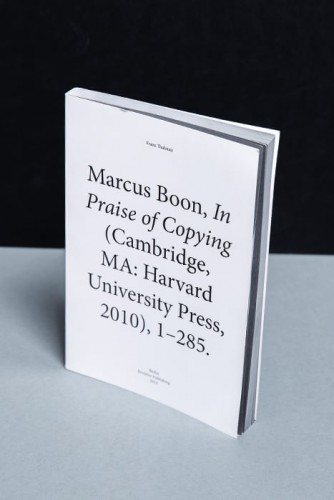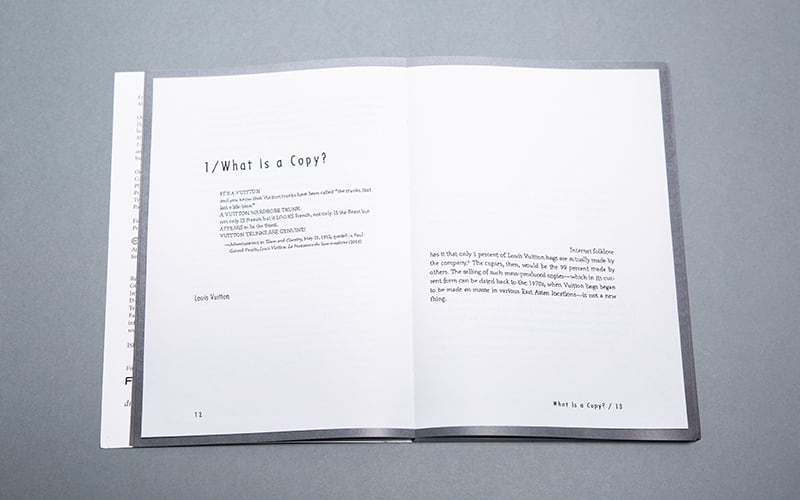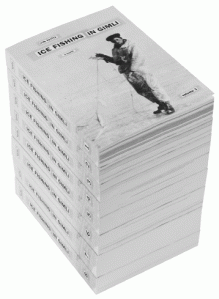A few years ago, Franz Thalmair wrote me to tell me that he was in the process of making a hand made copy of my book In Praise of Copying. I didn’t quite know what to make of such a project, but Thalmair would send me regular updates as to how it was going … and then one day he finished.

This hand made copy was then copied again and turned into the book Marcus Boon, In Praise of Copying (Cambridge, MA: Harvard University Press, 2010), 1 – 285, which was recently published by Revolver Publishing in Berlin. Thalmair recently sent me a copy. It is a strange and beautiful object. The typeface is a little blurry, as if slightly out of focus, imitating the stereotypical relationship of copy to original as having lost something, being a mere copy, ephemeral, slightly unfaithful to or divergent from the original. On the other hand, Thalmair’s careful tracing practice reintroduces a practice of uniqueness, originality, authenticity that turns the copy of the book that Thalmair was working with, a multiple, whether in pdf or print form, back into a unique object, with a Benjaminian aura, that fuzziness or haziness that marks it off as being the product of a certain time and place, and a certain kind of awe inspiring patience and manual labor too. But then this “original copy” is in turn copied and reproduced in an edition of 250 copies, the glossy paper allowing for an accurate facsimile of the hand produced tracing, and a grey border on each page framing the pages as being a visual object as much as a “book page”.

Thalmair told me that he copied passages that he had tagged or that he was interested in. At first glance, this makes the book feel like an erasure project, in which the gaps or spaces or silences encroach on the text. But Franz told me that he regarded the practice as containing a trace of his reading — and in that sense, the gaps seem less significant, and the text itself more like a positive memory or trace, as something that remains or has been collated, like a list of quotes. The feeling is uncanny — a rare moment when to read or look at a text is simultaneously to be reading or looking at someone else’s reading of the text. Of course we’re used to such things when we explore the marginalia found in an author’s library — but here the text and the phenomenological act of it being read by another person — and our access to that phenomenological event that belongs to someone else — all coincide.
Thalmair, who is a writer, curator, editor and professor at the University of Applied Art in Vienna, is co-director of the arts based research project Originalcopy—Post-digital Strategies of Appropriation. He and Michael Kargl recently put out a beautiful book of the same name containing work related to the project, including essays by myself, Bettina Funcke, Kenneth Goldsmith, Boris Groys, Jussi Parikka. In the introduction to the book, Thalmair asks: “is it possible to develop a methodology of contemporary copying practices by initiating a copying process that always remains aware of itself? And how can such a loop of thought in the copying process reveal knowledge about the simultaneous omnipresence and invisibility of the phenomenon of the copy, with its deep historical, cultural, and technological roots in society?” For Thalmair, copying can be a performative research practice — as it is with the book described above.






